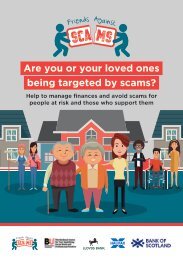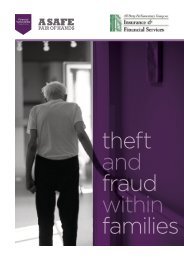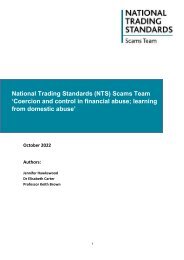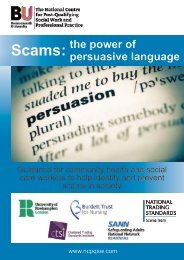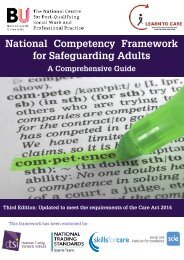Cyber Fraud and Scamming
This booklet focuses specifically on fraud and scamming; however cybercrime acts as a wider umbrella term, encompassing a range of criminal activity. Cybercrime can be simply defined as criminal activities carried out via the use of electronic devices, the internet and other forms of information and communications technology. The increasing use of computers and smartphones has facilitated a growth in the use of these systems as enablers of all types of crime, including: economic related cybercrime; organised crime; malicious and offensive communications; cyber stalking and harassment; and cyber terrorism.
This booklet focuses specifically on fraud and scamming; however cybercrime acts as a wider umbrella term, encompassing a range of criminal activity. Cybercrime can be simply defined as criminal activities carried out via the use of electronic devices, the internet and other forms of information and communications technology. The increasing use of computers and smartphones has facilitated a growth in the use of these systems as enablers of all types of crime, including: economic related cybercrime; organised crime; malicious and offensive communications; cyber stalking and harassment; and cyber terrorism.
Create successful ePaper yourself
Turn your PDF publications into a flip-book with our unique Google optimized e-Paper software.
If scammers can obtain individual’s card <strong>and</strong> bank<br />
details, they can utilise them in a variety of ways:<br />
• By gaining direct access to bank accounts,<br />
credit cards <strong>and</strong> online banking facilities.<br />
• Applying for credit by impersonating the<br />
target<br />
• Cheque, plastic card <strong>and</strong> online<br />
bank accounts<br />
• Remote purchase fraud<br />
• Application fraud<br />
• Mortgage related fraud<br />
• M<strong>and</strong>ate fraud<br />
• Dishonestly retaining a wrongful<br />
credit<br />
In 2016, £432.3 million was lost to remote<br />
purchase fraud, a 9% increase on the<br />
previous year. The vast majority of this type<br />
of fraud involves the use of card details<br />
that have been fraudulently obtained<br />
through methods such as unsolicited<br />
emails or telephone calls or digital attacks<br />
such as malware <strong>and</strong> data hacks. The<br />
card details are then used to undertake<br />
fraudulent purchases over the internet,<br />
phone or by mail order. It is also known as<br />
‘card-not-present’ (CNP) fraud.<br />
<strong>Fraud</strong> the Facts 2017, Financial <strong>Fraud</strong> Action<br />
UK (FFA UK)<br />
How do you spot one?<br />
The fake shopping coupons you find in social media<br />
posts tend to have common, recognisable features.<br />
Such as:<br />
• supermarket br<strong>and</strong>ing<br />
• a prominent offer<br />
• an expiry date<br />
• a bar code<br />
• link to a rewards or<br />
offers page<br />
• copy underneath<br />
saying it is to<br />
celebrate some kind<br />
of anniversary.<br />
Scammers will often put the same barcode <strong>and</strong><br />
expiry dates on coupons for different supermarkets, a<br />
big giveaway that it is a centrally managed scam.<br />
What to do if you have entered your personal details<br />
Start monitoring your bank accounts <strong>and</strong> credit If you have clicked the link, you might also want<br />
rating using a credit report. This is necessary in to run a malware checker or antivirus program<br />
case the scammers have used your details to on your device, in case the link was malicious.<br />
open other accounts or taken out loans in your Report it to Action <strong>Fraud</strong> on 0300 123 2040.<br />
name.<br />
Example provided by Stephen Forster, National Communications Officer for the National Trading<br />
St<strong>and</strong>ards eCrime Team




